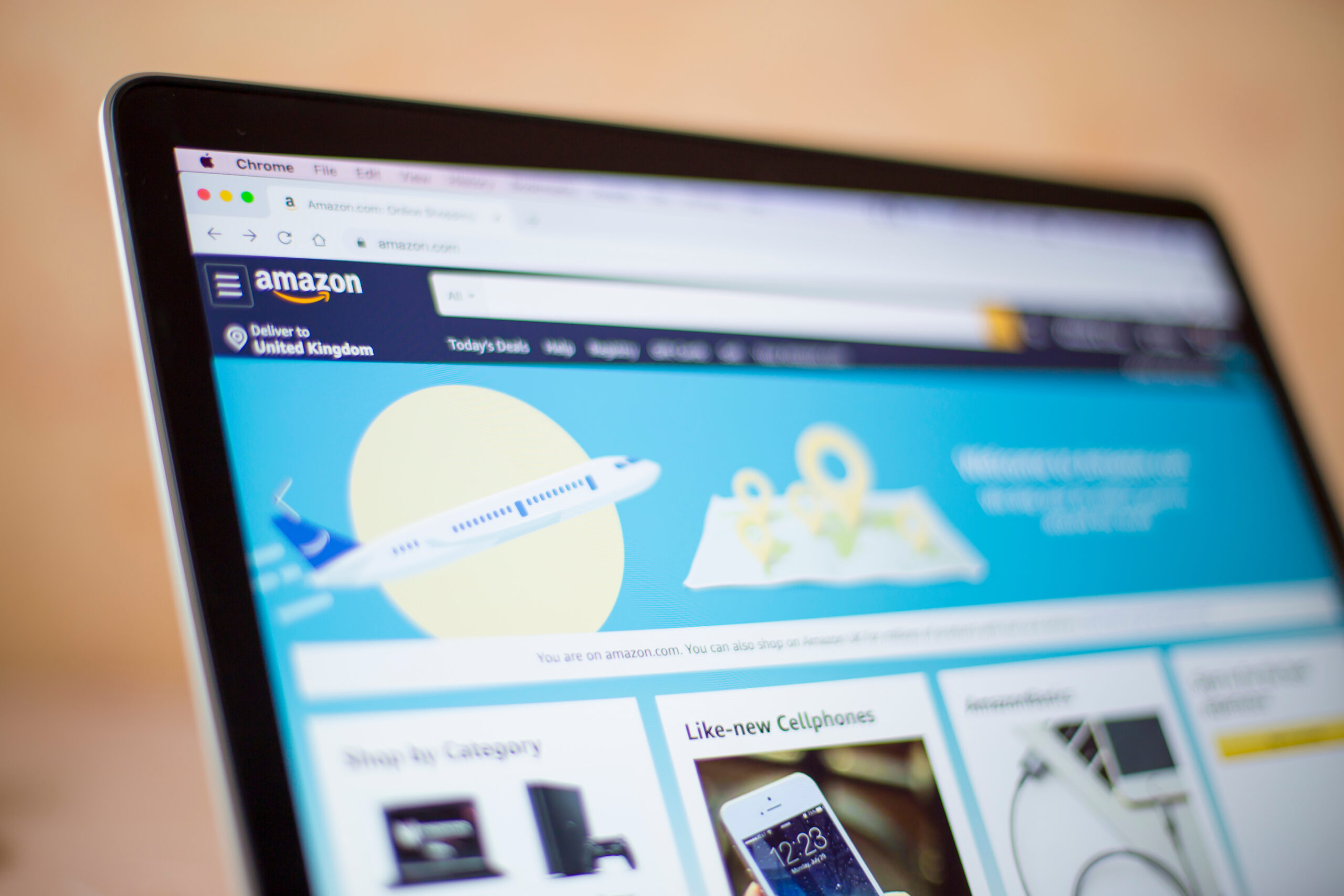
Amazon Not Highlighting Your Products? Your Store Might Be CRaP
Amazon Not Highlighting Your Products? Your Store Might Be CRaP
Danny Shepherd, CO-CEO • Intero Digital • August 10, 2023
In the highly competitive world of online retail, Amazon stands as a dominant force. With millions of products available on the platform, optimized Amazon pricing is essential for brands to ensure their products receive adequate visibility and prominence. However, brands that fail to meet these optimization standards often find themselves falling into CRaP.
In Amazon’s ecosystem, the dreaded term CRaP stands for “Can’t Realize a Profit,” and it refers to products with low profitability or minimal contribution compared to profitable Amazon products like toys and electronics. In many cases, CRaP is simply a reflection of poor marketplace channel management, bad pricing, and/or frequent price matching due to unmonitored distribution.
When a product is labeled CRaP, it receives less visibility and is not actively promoted by Amazon. This lack of visibility can significantly hinder a brand’s sales and overall success on the platform. Not to mention, a product classified as CRaP on Amazon can have negative implications for a brand’s overall perception, as customers may associate lower visibility or placement on Amazon with lower product quality or desirability.
However, it should be noted that a CRaP status is vendor-specific, and the manufacturer isn’t always the only vendor or source of an ASIN for Amazon.
What Lands Brands on the Amazon CRaP List?
While the exact criteria for landing on the Amazon CRaP list may vary, several factors can contribute to a manufacturer’s product offering to Amazon getting labeled as CRaP.
Not Price Matching
When certain goods are priced cheaper elsewhere — especially with a competitor — Amazon often enacts price matching to lower prices for their customers to ensure they remain competitive. However, this often takes on another level of difficulty for vendors selling to Amazon.
For example, consider you’re a brand selling smartwatches to Amazon. If Amazon’s internal or external marketplace scrapes consistently find that your smartwatches are priced higher than those on competing platforms such as Walmart or Wayfair, and if they cannot profitably match those competing offers, they may label your item as CRaP. This is because the Amazon price match should align or be lower than other competitors’ prices while still maintaining net profitability over an extended period of time. When price matching happens too often at zero or negative profit margin for Amazon, it considers the vendor’s product offer to have limited autonomy and be uncompetitive. Due to Amazon’s limited fulfillment center capacity, it will use this reason to invest its purchase orders and warehouse space with profitable items.
Weak Minimum Advertised Pricing Policy
A weak minimum advertised pricing policy undermines a brand’s control over pricing and damages its reputation. It lacks clear communication, consistent penalties, and effective enforcement mechanisms. This allows unauthorized retailers to undercut prices and erode the brand’s value. The policy’s inadequate monitoring and selective enforcement create an unfair landscape among authorized retailers, leading to dissatisfaction and potential loss of trust. Ultimately, the brand’s reputation suffers, customer loyalty wanes, and the brand may find itself listed as CRaP on Amazon, impacting sales and profitability.
Heavy/Bulky Items
Items sold in large quantities or packages are often purchased by businesses or individuals who require a more extensive supply or want to take advantage of the cost savings associated with buying in bulk. Heavy and oversized items slow down shipping times and cost far more due to their dimensions and weight, making it difficult for vendors, retailers, and Amazon to sell these products and make profits. This is a common contributor to items landing on the CRaP list, as manufacturers’ freight allowance terms with Amazon don’t always account for these outlier margin products, especially as shipping rates fluctuate.
Steer Clear of the Amazon CRaP List With These Solutions
To avoid being listed as CRaP by Amazon, you can proactively enhance your product offerings and improve your overall customer experience. Here are a few strategies you can implement to get your products back in the spotlight:
1. Enforce minimum agreed pricing policies.
If you operate as a wholesaler and supply products to various retailers, it is important to assess and optimize your Amazon sales channels by considering adjustments to your minimum agreed pricing policies. These policies help maintain a minimum resale price for your products, ensuring a certain level of pricing consistency among retailers.
In the US, brands have the option to enter into selective distribution agreements, which allows you to exercise more control over the resale price of your products. These agreements enable you to carefully choose the retailers authorized to sell your products and establish specific pricing guidelines for those retailers. By implementing selective distribution agreements, you can effectively regulate and potentially increase the resale prices of your products on Amazon. However, it is important to note that Amazon does not recognize minimum agreed pricing policies and will not discuss pricing with vendors due to price fixing laws. These conversations must be had with a manufacturer’s dealers and distributors.
2. Review terms with Amazon.
To safeguard your brand’s position on Amazon, it is crucial to ensure that your business operations align with Amazon’s terms and policies. Non-compliance with these terms can have serious consequences, including the possibility of your brand being placed on the Amazon CRaP list, which may result in reduced visibility and sales.
If you encounter complex legal concerns or require specific guidance in navigating Amazon’s terms and policies, consider seeking assistance from an attorney or a professional with experience in Amazon seller policies and agreements. They can provide valuable insights and help you understand the legal implications of your business practices on Amazon.
3. Fix supply chain issues.
If your business as a vendor deals with high shipping and handling costs, it may be beneficial to explore logistical initiatives offered by Amazon to optimize your operations. Amazon provides a variety of choices for vendors to improve their logistics, ranging from consolidated truckload orders to inbound programs and solutions that eliminate the need to deliver products to Amazon warehouses, such as Direct Fulfillment or VendorFlex.
For example, you can create bundles for lower-priced ($5-10) items so that Amazon has the margin room to ship those items and make a profit. Additionally, consider limiting and policing distribution to unidentifiable sellers that choose to liquidate or sell those products at pennies on the dollar.
By leveraging these logistical initiatives, you can gain greater control over your cost structures. Additionally, options like Direct Fulfillment or VendorFlex enable you to ship products directly to customers from your own facilities, bypassing the need to store inventory in Amazon’s warehouses. This approach can lead to lower variable cost structures, as you can save on storage and fulfillment fees charged by Amazon. By reducing costs and optimizing logistics, you can improve profitability and reduce the risk of your products being labeled as CRaP by Amazon.
As a seller on Amazon, it’s important to proactively explore and engage with these logistical initiatives provided by the platform. By selling on Amazon and implementing efficient shipping and handling practices, you can achieve cost savings, enhance operational efficiency, and contribute to Amazon’s bottom line — and, thereby, your own. This collaborative approach helps create a win-win situation for both you and Amazon, reducing the likelihood of your products being categorized as CRaP and fostering a mutually beneficial relationship.

